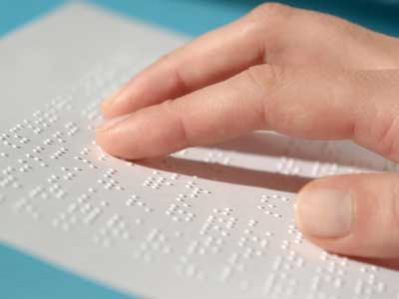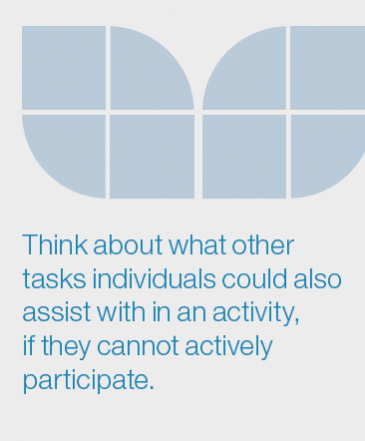Vision loss is any reduction in the ability to see, including blurred vision, cloudy vision, double vision, blind spots, poor night vision, and loss of peripheral vision (tunnel vision). Vision loss may affect one or both eyes, it may occur gradually or suddenly, and it may be partial or complete. Vision changes may originate in the eyes themselves or may be caused by many different conditions that affect the brain or even the whole body.
Participant leaders need to be constantly aware of the degree of vision impairment of a participant and consider this when developing a program and involving the min activities. Beware that the length of time of sight impairment will often determine the comfort factor with trying new or challenging sport and active recreation activities.
In communicating with a participant who has vision impairment:
- speak directly to them, not through a third person;
- address them by name;
- identify yourself and introduce them to other people;
- tell them when you’re leaving so that they are not left talking to themselves;
- speak in the normal speaking volume: people with vision impairment usually have normal hearing;
- where possible, eliminate any background noise so that instructions can be heard.
In assisting a participant who is visually impaired it is important to be articulate and to give the fullest description of instructions; this may involve moving parts of their body to indicate a required movement for an activity.
It is important that you discuss with the participant the need to assist through touch before actually touching them. Familiarize them with an area and obstacles that may exist let them feel the area and give them time to explore.
Give the participant constant verbal feedback so that they know whether or not an action is being done correctly.
Programming Considerations
- Be aware of each individual’s capabilities.
- Ask what support is required – do not assume without asking.
- Think about what other tasks individuals could also assist with in an activity, if they cannot actively participate.
- Be aware of what type of modified or supportive equipment is available.
- Programming areas will need to be cleared of obstacles.
Strategies for Inclusion
- Get other participants to provide assistance if appropriate.
- Make sure to provide an orientation to the program area.
- Verbal cues and guiding will be required but ask first.
- Provide 1:1 support if necessary
Further information : www.betterhealth.vic.gov.au


